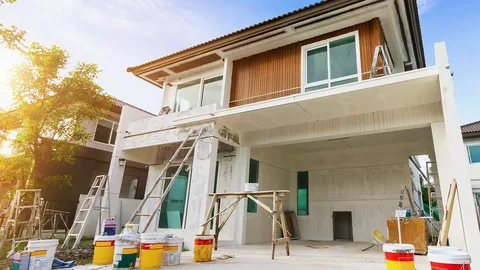In the world of interior design, creating practical and functional spaces is essential for enhancing everyday living. Whether you’re designing a home or a retail space, achieving a cohesive look that serves both form and function can transform the way you experience your environment. If you’re seeking expert advice on how to perfect your space, consider consulting a Interior Designer Los Angeles to bring your vision to life. This article explores key strategies for designing practical, functional, and cohesive interiors.
Understanding Practical and Functional Design
Practical and functional design is about making spaces that work efficiently while also looking aesthetically pleasing. This approach focuses on:
- Optimizing Space Utilization: Effective design ensures that every square foot serves a purpose. This includes maximizing storage options and creating layouts that facilitate easy movement.
- Choosing Durable Materials: In both residential and commercial spaces, selecting materials that withstand wear and tear is crucial. This is especially important in high-traffic areas like retail stores.
- Incorporating Ergonomic Principles: Functional interiors often involve ergonomically designed furniture and fixtures that enhance comfort and usability.
Creating a Cohesive Look
A cohesive interior design ties together various elements into a unified look. Here’s how to achieve it:
- Develop a Design Concept: Start with a clear vision or theme that reflects your style or brand identity. This concept will guide your choices for colors, materials, and furniture.
- Use a Consistent Color Palette: Choose a color scheme that complements the space’s purpose and mood. Neutral tones can create a calming atmosphere, while bold colors might energize a space.
- Select Coordinating Furniture and Decor: Ensure that your furniture and decor items work well together. This doesn’t mean everything has to match perfectly, but the elements should harmonize in style and color.
Functional Layouts
An effective layout is key to a functional interior. Consider these elements:
- Flow and Accessibility: Arrange furniture and fixtures to promote easy movement. In retail spaces, this means clear aisles and intuitive product placement.
- Multi-Functional Furniture: Opt for pieces that serve multiple purposes, such as storage benches or convertible sofas, to maximize space.
- Lighting: Proper lighting is essential for both functionality and ambiance. Incorporate a mix of task, ambient, and accent lighting to create a well-lit environment.
Storage Solutions
Efficient storage solutions are vital for maintaining a clutter-free and functional space:
- Built-In Storage: Custom cabinetry and built-in shelves can save space and provide a sleek look. These are especially useful in small or awkward spaces.
- Smart Organization: Use organizers, dividers, and bins to keep items tidy and accessible. In retail settings, clear signage and designated areas for different products enhance shopper experience.
Practical Design Tips for Different Spaces
- Residential Interiors: For homes, focus on creating cozy and functional living areas. This might involve designing open-plan spaces that encourage family interaction or incorporating smart home technologies for convenience.
- Retail Interiors: In retail design, the goal is to attract and retain customers. Design layouts that guide shoppers through the store and create inviting displays that highlight key products.
FAQ Section
Q: What is a practical interior design? A: Practical interior design focuses on creating spaces that are functional, comfortable, and efficient while also being aesthetically pleasing. It involves optimizing space, selecting durable materials, and ensuring that every element serves a purpose.
Q: How can I make a small space feel functional? A: Utilize space-saving furniture, incorporate multi-functional pieces, and use vertical storage solutions. Light colors and mirrors can also make a small space appear larger and more open.
Q: Why is it important to have a cohesive design? A: A cohesive design creates a harmonious look that makes the space more inviting and visually appealing. It ensures that all elements work together to reinforce the overall theme and purpose of the space.
Q: What are some effective storage solutions for a retail space? A: Use built-in shelving, modular display units, and clear signage to organize products effectively. Smart inventory management and strategically placed storage areas can also enhance the shopping experience.
Q: How can lighting affect the functionality of a space? A: Proper lighting improves visibility, highlights key areas, and creates a desirable ambiance. It’s important to use a combination of task, ambient, and accent lighting to cater to different needs and activities within the space.
In summary, practical, functional, and cohesive interiors enhance the usability and aesthetic appeal of any space. By focusing on these aspects, you can create environments that are not only beautiful but also efficient and welcoming. For expert guidance tailored to your specific needs, consulting a Retail Interior Designer in Los Angeles can help you achieve your design goals.


